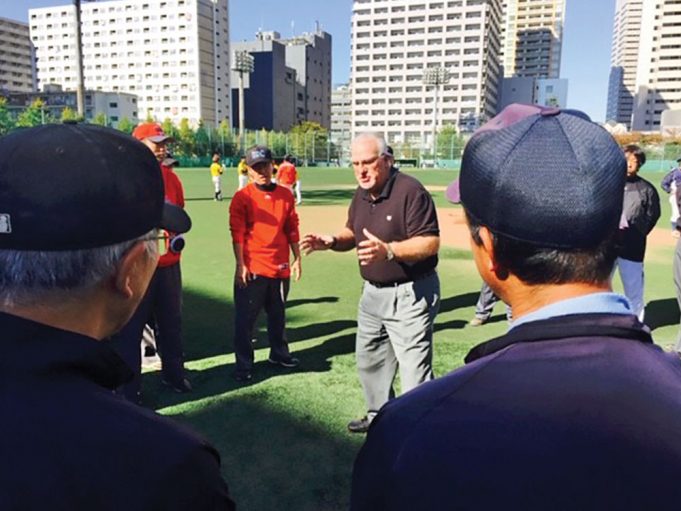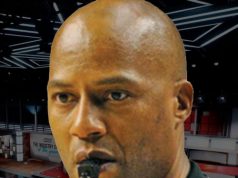Larry Young retired as an MLB umpire at the close of the 2007 season, bringing down the curtain on a career that spanned 24 big-league seasons and included appearances in two All-Star games, six Division Series, three League Championship Series and two World Series.
But Young, who is now 65, still had an abiding passion for baseball and for umpiring. He also enjoyed traveling. So the job offer he received upon his retirement was too good to turn down.
“My supervisor, Mike Port, indicated there was an area that hadn’t really been touched and asked if I was interested in international baseball,” Young recalled.
He was.
“It was a good fit,” Young said. “I had always been interested in traveling to other countries, seeing different cultures, and working with umpires from other parts of the world. So it was a perfect fit for baseball and for me.”
To say Young has embraced his role would be an understatement. Over the past two-plus decades, Young has traveled to nearly two dozen different countries to conduct clinics, where he works with and evaluates umpires. “It’s been very fulfilling,” he said. “I have contacts all over the world and friends all over the world and I’ve been able to have an impact on umpiring in various parts of the world.”
“Larry is our expert on international umpires and has undertaken countless initiatives to identify and train candidates,” said Mike Teevan, MLB’s vice president of communications. “Larry has relationships with leagues and entities all over the world, all with an eye on umpire development. He travels all over the world for us.”
Young conducts two types of clinics, depending on the experience level of the attendees. One is a two-day session designed to impart the basic fundamentals of umpiring to those with limited or no experience.
“We start out at the beginning,” Young said. “We talk about ball-strike and working in the cage with some pitching and catching and working on positioning and just start off at the beginning.”
For more experienced umpires, including those who might be candidates for the World Baseball Classic and/or positions in Minor League Baseball, Young conducts five-day clinics that are more in-depth.
“We work on four-umpire positioning,” he said, “and we also take advantage of instincts. We tell the umpires to trust their instincts. We show them some advanced positions that we don’t necessarily show entry-level umpires.”
International umpiring sees significant improvement
Young says he’s seen significant improvement in the caliber of international umpiring in recent years, particularly in Europe, where he has often worked as a clinician with Gus Rodriguez of the World Baseball and Softball Confederation.
“The caliber of baseball was way ahead of the caliber of umpiring five years ago,” Young said, “and I think that the umpiring is catching up. I think that the umpiring is now on par with the level of play in most countries. Italy has a very good system, they have good baseball. Probably, the best baseball in Europe is in the Netherlands and they have improved immensely.
“In Europe, it’s not uncommon for umpires from other countries to travel within Europe and umpire games outside their countries.”
Young has served as the umpire coordinator for the past three World Baseball Classics and is often looking for umpires capable of handling that level of competition.
He’s looking for good umpiring instincts, which he defines as having the ability to adjust to a play in progress.
“An umpire will understand this,” he said, “the ability to read a play, and adjust to the play, and get set again, and then see the play, as opposed to someone who is a spot umpire that just goes to a spot and tries to get the play right without adjusting. Someone who can do that is someone I would be interested in as an international umpire.”
On occasion, Young will suggest a prospect enroll at an umpire school in the United States. From there the candidate must be selected for the advanced course that includes candidates from every umpire school. Minor League Baseball selects from the attendees of that advanced course for jobs. It’s the same path that is followed by any other candidate.
Young has helped train two umpires who are now part of the MLB staff. Manny Gonzalez became the first Venezuelan umpire in MLB history when he worked his first big-league game in 2010. The 39-year-old Gonzalez became a full-time member of the MLB staff in 2013. Forty-year-old Carlos Torres, also a native of Venezuela, made his MLB debut in 2015 and joined the full-time staff at the start of the 2017.
Of the 91 umpires on MLB’s roster at the start of the 2018 season, just six, or 6.6 percent, were born outside the United States. That number contrasts sharply with the approximately 220 foreign-born players who constituted 29 percent of big-league rosters at the start of last season. At the minor-league level, the figure is slightly higher. Twenty-three of the 245 umpires who worked in the affiliated minor leagues, or 9.4 percent, were born outside the United States.
Those figures may change in seasons to come as MLB’s outreach prompts other umpires to consider attending an umpire school in the United States.
“We are proud to be a global sport,” Teevan said, “and diversity is a top priority of our game at all levels. We plan to continue umpire development initiatives across the United States and in many other countries where baseball is played.”
What's Your Call? Leave a Comment:
Note: This article is archival in nature. Rules, interpretations, mechanics, philosophies and other information may or may not be correct for the current year.
This article is the copyright of ©Referee Enterprises, Inc., and may not be republished in whole or in part online, in print or in any capacity without expressed written permission from Referee. The article is made available for educational use by individuals.


















